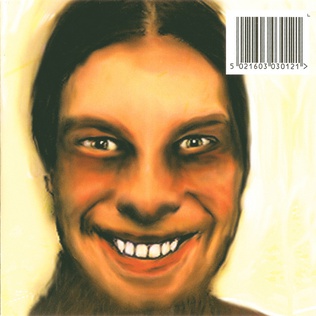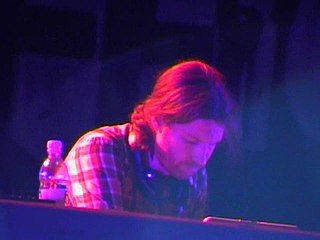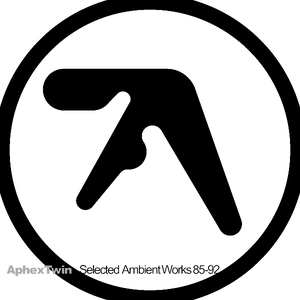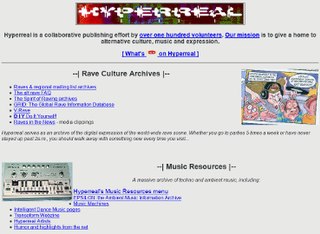Related Research Articles
Breakbeat hardcore is a music genre that spawned from the UK rave scene during the early 1990s. It combines four-on-the-floor rhythms with breakbeats usually sampled from hip hop. In addition to the inclusion of breakbeats, the genre also features shuffled drum machine patterns, hoover, and other noises originating from new beat and Belgian techno, sounds from acid house and bleep techno, and often upbeat house piano riffs and vocals.
Intelligent dance music (IDM) is a style of electronic music originating in the early 1990s, defined by idiosyncratic experimentation rather than specific genre constraints. It emerged from the culture and sound palette of electronic and rave music styles such as ambient techno, acid house, Detroit techno and breakbeat; it has been regarded as better suited to home listening than dancing. Prominent artists associated with it include Four Tet, Aphex Twin, Autechre, Squarepusher, Venetian Snares, Boards of Canada, Amon Tobin, Telefon Tel Aviv, μ-Ziq, the Black Dog, the Future Sound of London, and Luke Vibert.
Psychedelic trance, psytrance, or psy is a subgenre of trance music characterized by arrangements of rhythms and layered melodies created by high tempo riffs. The genre offers variety in terms of mood, tempo, and style. Some examples include full on, darkpsy, forest, minimal (Zenonesque), hitech psy, progressive, suomi, psy-chill, psycore, psybient, psybreaks, or "adapted" tracks from other music genres. Goa trance preceded psytrance; when digital media became more commonly used psytrance evolved. Goa continues to develop alongside the other genres.

Warp Records is a British independent record label founded in Sheffield in 1989 by record store employees Steve Beckett and Rob Mitchell and record producer Robert Gordon. It is currently based in London.

...I Care Because You Do is the third studio album by electronic musician Richard D. James under the alias Aphex Twin, released on 24 April 1995 by Warp. Containing material recorded between 1990 and 1994, the album marked James's return to a percussive sound following the largely beatless Selected Ambient Works Volume II (1994), and pairs abrasive rhythms with symphonic and ambient elements. The cover artwork is a self-portrait by James.

Selected Ambient Works Volume II is the second studio album by Aphex Twin, the pseudonym of British electronic musician Richard D. James. It was released by Warp in March 1994. Billed as a follow-up to James' debut Selected Ambient Works 85–92, the album differs in sound by being largely beatless ambient music. James claimed that it was inspired by lucid dreaming, and likened the music to "standing in a power station on acid."
Ambient house is a downtempo subgenre of house music that first emerged in the late 1980s, combining elements of acid house and ambient music. The genre developed in chill-out rooms and specialist clubs as part of the UK's dance music scene. It was most prominently pioneered by the Orb and the KLF, along with artists such as Global Communication, Irresistible Force, Youth, and 808 State. The term was used vaguely, and eventually fell out of favor as more specific subgenres were recognized.
Progressive house is a subgenre of house music. The progressive house style emerged in the early 1990s. It initially developed in the United Kingdom as a natural progression of North American and European house music of the late 1980s.

Surfing on Sine Waves is a studio album by Polygon Window, a pseudonym for the English electronic music producer Richard D. James, better known by the alias Aphex Twin. It was originally released on 11 January 1993 by Warp. It is the second release in Warp's Artificial Intelligence series. It entered the UK Dance Albums Chart at No. 2 on 23 January 1993. James' previous album, Selected Ambient Works 85–92, was at No. 9, and James briefly had two records in the Dance Albums Top 10 under different pseudonyms. The 2001 reissue edition includes the previously unreleased tracks "Portreath Harbour" and "Redruth School".

Analogue Bubblebath, also released as Aphex Twin ep, is the first record by musician and producer Richard D. James. The EP was released under his alias The Aphex Twin through Mighty Force Records in September 1991. It was the inaugural release for the label, which at the time was a record shop in Exeter. The record was hugely influential on the development of electronic music, particularly techno and ambient techno. Its release has been described as a key event in the history of dance music. It is the first release in what became the Analogue Bubblebath series.
B12 are a British electronic music duo consisting of Mike Golding and Steve Rutter. First appearing in the early 1990s under a variety of monikers, including Musicology, Redcell and Cmetric, the duo were often mistaken as hailing from Detroit, their sound being comparable to the so-called second wave of Detroit techno. This was compounded by the signature style of their initial releases on their own imprint B12 Records, limited editions on coloured 12" vinyl with cryptic messages etched into the run-out grooves, and the fact that Golding and Rutter tended to shy away from the press, and rarely gave interviews, which added to the mystery of their identities.

Classics is a 1995 compilation album by electronic musician Richard D. James, more commonly known by his pseudonym of Aphex Twin.
Higher Intelligence Agency (HIA) is the main electronic music project of Birmingham, UK-based Bobby Bird. They were featured on Warp's 1994 Artificial Intelligence II compilation.

Richard David James, best known as Aphex Twin, is an Irish-born British musician, composer and DJ. He is known for his idiosyncratic work in electronic styles such as techno, ambient, and jungle. Journalists from publications including Mixmag, The New York Times, NME, Fact,Clash and The Guardian have called James one of the most influential and important artists in contemporary electronic music.

Selected Ambient Works 85–92 is the debut studio album by Aphex Twin, the pseudonym of British electronic musician Richard D. James. It was released on 9 November 1992 through Apollo Records, a subsidiary of Belgian label R&S Records. The album consists of ambient techno tracks recorded onto cassette reputedly dating as far back as 1985, when James was thirteen to fourteen years old. Upon release it received widespread acclaim. It entered the UK Dance Albums Chart at No. 6 on 26 December 1992.
Drill 'n' bass is a subgenre of drum and bass which developed in the mid-1990s as IDM artists began experimenting with elements of breakbeat, jungle, and drum and bass music. Artists utilized powerful audio software programs and deployed frenzied, irregular beats that often discouraged dancing. The style was often interpreted as having a lightly parodic relationship with the dance styles that inspired it.
Psydub is a fusion genre of electronic music that has its roots in psychedelic trance, ambient and dub music. Incorporated dub elements are melodic basslines, deep reggae roots and producing techniques like dynamically adding extensive echo, reverb, panoramic delay, and occasional dubbing of vocal or instrumental snippets from the original version or other works. An incorporated ambient element is an emphasis on tone and atmosphere. Incorporated psytrance elements are low-bass frequencies and hypnotic melodies and the use of samples. Those samples mostly contain references to drugs, parapsychology, extraterrestrial life, existentialism, out of body experiences, dreams, science, time travel, spirituality and similar mysterious or unconventional topics. Psydub is also highly influenced by the music of India.

The Positiva Ambient Collection is a compilation album of various artists released by British dance music label Positiva Records in 1993, documenting ambient house and ambient techno music, both of which were popular underground electronic genres in the United Kingdom at the time. The compilation, the first album released on the label, features an exclusive live recording of The Orb and is said to prove ambient house's variety and worldwide emergence. Upon its release, The Positiva Ambient Collection received critical acclaim, and has continued to receive acclaim in the ensuing years. It has also been credited for bringing Beaumont Hannant to prominence via the inclusion of his track "Awakening the Soul".

Hyperreal.org, also known as Hyperreal, is a rave culture website founded by Brian Behlendorf in 1994. It is based in San Francisco.
Bleep techno is a regional subgenre of techno which developed in the late 1980s in Northern England, specifically Yorkshire. Named after its minimalistic synthesizer sounds, bleep techno combined influence from American techno and house with electro elements and heavy sub-bass inspired by reggae sound system culture. The style was commercially successful between 1989 and 1991, and became associated with artists on the Sheffield label Warp Records. It has been characterized as the first uniquely British style of electronic dance music.
References
- 1 2 3 4 "Ambient Techno - Genre Overview". AllMusic . Retrieved 6 June 2017.
- ↑ Cooper, Sean. "Biosphere - Biography". AllMusic. Retrieved 22 May 2021.
- 1 2 3 4 5 Reynolds, Simon (2012). Energy Flash: A Journey Through Rave Music and Dance Culture. Soft Skull Press. pp. 156–7.
- 1 2 Albiez, Sean (2017). Bloomsbury Encyclopedia of Popular Music of the World, Volume 11. Bloomsbury. p. 26. ISBN 9781501326103 . Retrieved 10 January 2020.
- ↑ Rietveld, Hillegonda (2010). "Infinite Noise Spirals: The Musical Cosmopolitanism of Psytrance". The Local Scenes and Global Culture of Psytrance. Routledge: 74.
- 1 2 3 4 5 "Artforum International". 33. 1995.
{{cite journal}}: Cite journal requires|journal=(help) - ↑ Rietveld, Hillegonda (2010). "Infinite Noise Spirals: The Musical Cosmopolitanism of Psytrance". The Local Scenes and Global Culture of Psytrance. Routledge: 74.
- ↑ Marcus, Tony (19 July 2011). "The 20 greatest ambient albums ever made". Fact. Retrieved 8 February 2020.
- ↑ Reynolds, Simon (2012). Energy Flash: A Journey Through Rave Music and Dance Culture. Soft Skull Press. pp. 217–218.
- ↑ Reynolds, Simon (March 1994). "Aphex Twin - Selected Ambient Works Vol II". Spin. Retrieved 28 April 2022.
- ↑ Barr, Tim (2000). Techno: A Rough Guide. Rough Guides. p. 222.
- ↑ Bush, John. "Every Man and Woman Is a Star – Ultramarine". AllMusic . Retrieved 13 June 2018.
- ↑ Thompson, Dave (2000). Alternative Rock: Third Ear - The Essential Listening Companion. Miller Freeman. p. 157.
- ↑ "Warp to reissue B12's ambient techno classic Electro-Soma". Resident Advisor. Retrieved 7 September 2022.
- ↑ Eede, Christian. "Luke Slater Returns To The 7th Plain Alias". The Quietus. Retrieved 28 April 2022.
- ↑ The Bloomsbury Encyclopedia of Popular Music of the World, Volume 11. Bloomsbury. 2017. p. 168.
- ↑ Sherburne, Philip (3 February 2022). "A New Wave of Dark Ambient Artists Wants to Make You Uncomfortable". Pitchfork. Retrieved 24 September 2022.
- ↑ "Gas: Biography & History". AllMusic. Retrieved 22 April 2018.
- ↑ Colly, Joe. "Pop Ambient 2009". Pitchfork. Retrieved 22 May 2021.